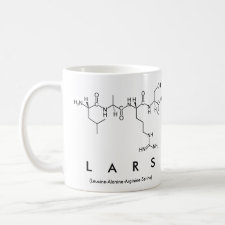
Authors: Schweitz L, Andersson LI, Nilsson S
Article Title: Molecular imprint-based stationary phases for capillary electrochromatography.
Publication date: 1998
Journal: Journal of Chromatography A
Volume: 817
Issue: (1-2)
Page numbers: 5-13.
DOI: 10.1016/S0021-9673(98)00417-8
Abstract: The combination of capillary electrochromatography, which provides a high degree of separation efficiency and short separation times, with molecular imprinting, which provides a means for preparing stationary phases of predetermined selectivity, is discussed in this review. Polymerisation around a templating ligand, using monomers that are selected for their ability to participate in non-covalent interactions, constitute the key step of molecular imprinting. Imprints possessing a permanent memory for the imprint species are formed, enabling the resultant polymer selectively to rebind the imprint molecule from a mixture of closely related compounds. Levels of binding affinity and selectivity typical of antibodies are achievable in the best cases. Several studies have focused on imprinted polymers being used as chiral stationary phases in liquid chromatography (LC) where the enantioselectivity of a given polymer is predetermined by the enantiomeric form of the templating ligand. The use of imprinted LC columns, however, is hampered by their poor chromatographic performance, evidenced by peak broadening and tailing. Being a more efficient chromatography technique, the use of capillary electrochromatography greatly improves the performance of imprinted polymer-based separations. The most successful approach utilises capillary columns filled with a monolithic, superporous imprinted polymer obtained by an in situ photo-initiated polymerisation process. This technique enables imprint-based separation systems to be operational within 3 h from the start of capillary preparation. Enantiomer separations with baseline resolution have been carried out in less than 2 min. Other approaches to capillary electrochromatography (CEC) and capillary electrophoresis (CE) involve immobilisation of imprinted polymer particles inside capillaries using a polyacrylamide gel, the use of imprinted particles as a chiral mobile phase additive and the use of an imprinted polymer prepared by a dispersion polymerisation process. (C) 1998 Elsevier Science B.V. All rights reserved



Join the Society for Molecular Imprinting

New items RSS feed
Sign-up for e-mail updates:
Choose between receiving an occasional newsletter or more frequent e-mail alerts.
Click here to go to the sign-up page.
Is your name elemental or peptidic? Enter your name and find out by clicking either of the buttons below!
Other products you may like:
 MIPdatabase
MIPdatabase









